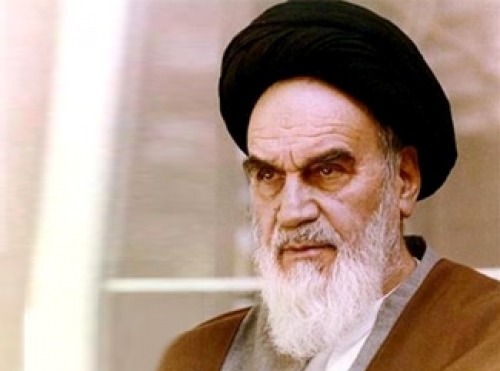- News code: 1237983
The fall of Reza Khan (1939)
The fall of Reza Shah marked the start of Iranian History. The tyrant Reza Shah and his dictatorship collapsed suddenly. Although it was temporary, the people who had endured this dictatorship had a chance to be free. In these new circumstances, the political situation changed and those advocating freedom had an opportunity to present their idea and move towards a free country with free people.
In this rare occasion, the religious activists also started a movement and publicized it. One of the religious figures was Ali Akbar Hakami Zadeh. In 1943 he wrote an essay entitled "The Thousand Year Mystery", which consisted of about 38 pages and was about the Wahabi sect and the Shi'a.
This essay was quickly distributed among the people. People talked about it everywhere, some supported it and some opposed it. At that time the people's faith was weakened, in danger and under threat. Imam Khomeini came as a saviour. He acted decisively in order to fight with religious corruption and save religion. He decided to leave and give up his teaching in order to stand against the threats against religion. He used the best of his knowledge to ruin the foundations of Hakami Zadeh, which were misleading. Imam Khomeini has said the following when recalling those days:
"One day while I was going to Faydhiah School I noticed that some people were talking about the 'Thousand years Mystery' essay! Suddenly it struck my mind that we are teaching ethics while such matters have infiltrated into the Theology Schools and have become the main talk of students."
As a reaction to these circumstances and as a reply to the 'Thousand years Mystery' essay, the Imam went into forty days of solitude at his residence and wrote a book called Kashfe Assrar "Uncovering the Mystery". This book was based on the Qur'anic text, prophetic hadiths, and was supported by Greek philosophical viewpoints.
Another essay written by Imam Khomeini was published on the 5th of May 1944. This essay shows the Imam's opinions:
"Selfishness and neglecting to rise in the name of God have led us to these dark days. It has made us so weak that the entire world has taken control over us.… O clergymen! O Muslim scholars! O religious spiritual leaders! Read what God has told us to do and change your ways. Choose and practice God's reforms. Choose the way God has offered us. Accept God's words and avoid relying on personal benefit. In this way, you will achieve prosperity in the world."
Inviting Ayatollah Borojerdi to Qom
The Imam kept on trying to achieve unity among the Islamic scholars. He finally succeeded in fulfilling this aim by convincing the Islamic scholars to invite Ayatollah Sayyid Hussein Borojerdi to move to Qom. In doing so he was able to make Ayatollah Borojerdi one of the main and central advocators of unity. This and the Imam's efforts and hard work resulted in a united board of clergymen.
Ayatollah Borojerdi left Borojerd for Tehran in January 1945. According to Imam Khomeini, this move had many positive outcomes, and strengthened and united the clergymen.
One of these outcomes was the reform and reorganization of the Howzeye E'lmiah of Qom. This made scholars more aware of political affairs and more effective in their responses to political situations.
Although Imam Khomeini was a remarkable scholar, nevertheless he attended the lectures given by Ayatollah Borojerdi.

After this achievement, other positive outcomes followed. Two examples of this were setting examinations for clergymen and establishing a board which dealt with the clergymen's different affairs.
The national movement
Along with the gradual improvements in the central Feyzieh School, the country's political atmosphere underwent some changes. For instance the national movement for the nationalization of oil was founded.
Imam Khomeini was up to date with daily events and tried to find the real reason behind the occurrence of such incidents. This was at a time when the atmosphere within the Feyzieh School was one of indifference. Clergymen opted to stay out of political affairs, and refused to challenge the regime. Although the Imam tried to inform Ayatollah Kashani of his political views in a letter, Ayatollah Kashani did not see the need to acknowledge the Imam's opinions. The Imam at that time was one of the most political and educated scholars of his time and was a representative of Ayatollah Borojerdi.
In 1953 Imam Khomeini carried on investigating the conflicts between the theology students and the security forces. The Taraqi newspaper relates that, "Our reporter went to Ayatollah Borojerdi's place. The Ayatollah said, 'You had better talk to my formal representative Agha Haj Sayyid Rouhullah Khomeini'." It has also been said that Imam Khomeini visited the Shah as a representative of Ayatollah Borojerdi on two occasions. This was to inform the Shah of the stance the Feyzieh School was taking.
- The Imam's Background
- The childhood period
- Immigration to Arak
- Immigration to Qom
- Marital life
- Imam from 1941-1961
- The start of political confrontations
- The attack on Faydhiah School
- Exile to Turkey
- Exile to Iraq
- Exile to Paris
- Return to Tehran
- Visiting the holy city of Qom
- Establishment of an Islamic Republic
- Residence in Tehran
- Death (1989)

